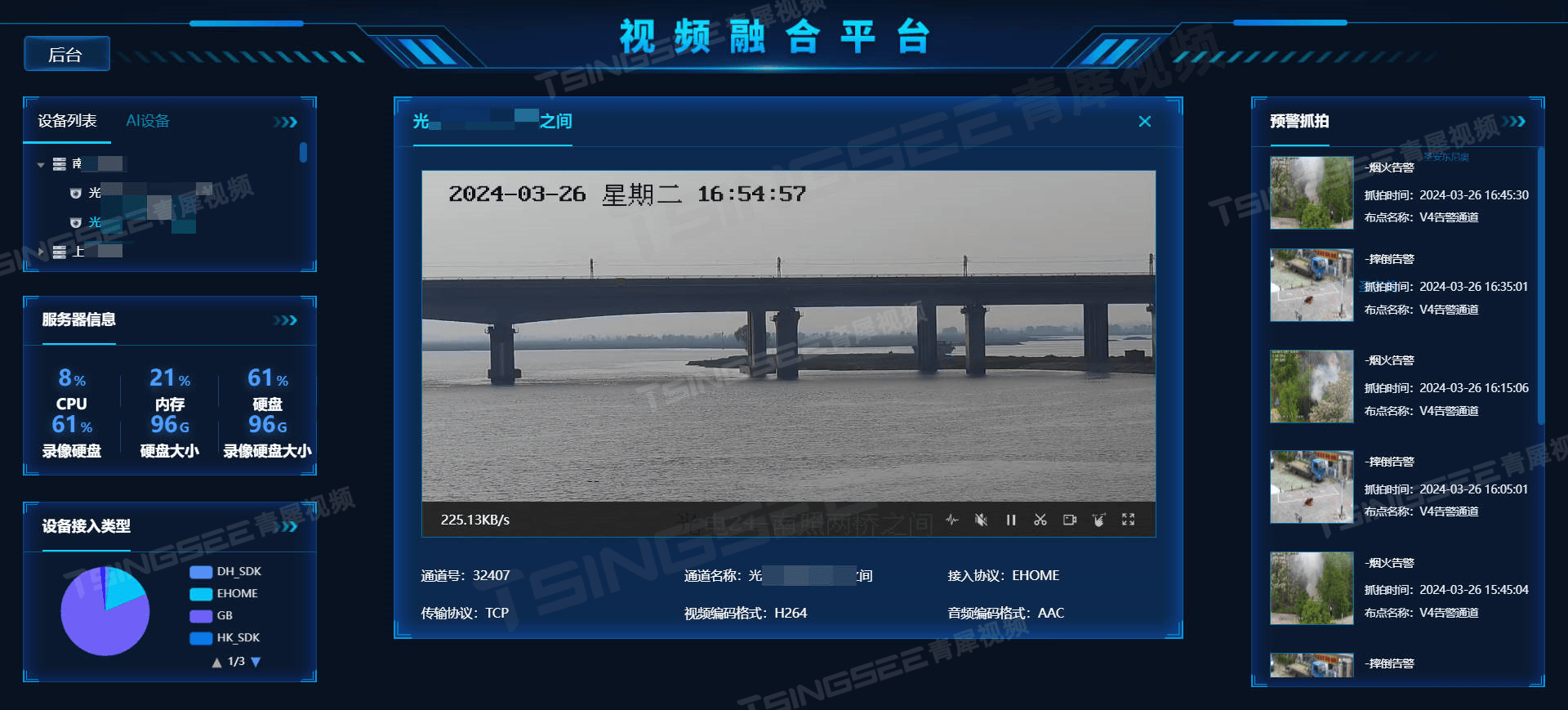版权声明:本文为博主原创文章,转载请在显著位置标明本文出处以及作者网名,未经作者允许不得用于商业目的。
EmguCV学习笔记目录 Vb.net
EmguCV学习笔记目录 C#
笔者的博客网址:VB.Net-CSDN博客
教程相关说明以及如何获得pdf教程和代码(博客上的教程内容会和pdf教程一致,教程中也会包含所有代码),请移步:EmguCV学习笔记
2.2 Matrix类
Matrix类是EmguCV中的一个矩阵类,它可以用来存储和处理矩阵数据,可以处理任意维度的矩阵。与Mat类相比,Matrix类提供了更多的矩阵运算方法,如矩阵加减、乘法、逆矩阵等,也更加灵活,而且底层实现也更加高效。
通常而言,Matrix类应为Matrix(Of 数据类型)的形式,其中数据类型指明了该矩阵中元素的存储类型,包括Byte、Integer、Single等。
2.2.1 构造函数
为了显示Matrix的结果,请在窗体上放置一个MatrixBox控件。该控件位于【工具箱】|【Emgu.CV】下面。另外,
1、使用一维数组初始化Matrix:
【代码位置:frmChapter2_1】Button1_Click
'Matrix构造函数:一维数组初始化Matrix
Private Sub Button1_Click(sender As Object, e As EventArgs) Handles Button1.Click
Dim inputBytes() As Byte = New Byte() {1, 2, 3, 4, 5, 6, 7, 8, 9}
Dim matr As New Matrix(Of Byte)(inputBytes)
MatrixBox1.Matrix = matr
End Sub
显示结果如下:

图2-2 一维数组初始化Matrix
2、使用二维数组初始化Matrix:
【代码位置:frmChapter2_1】Button2_Click
'Matrix构造函数:二维数组初始化Matrix
Private Sub Button2_Click(sender As Object, e As EventArgs) Handles Button2.Click
Dim inputBytes(,) As Byte = New Byte(,) {{1, 2, 3}, {3, 4, 5}, {5, 6, 7}, {7, 8, 9}}
Dim matr As New Matrix(Of Byte)(inputBytes)
MatrixBox1.Matrix = matr
End Sub
显示结果如下:

图2-3 二维数组初始化Matrix
3、指定大小初始化Matrix,然后写入值:
【代码位置:frmChapter2_1】Button3_Click
'Matrix构造函数:初始化矩阵的大小(Size)
'注意使用size的话,width是列,height是行,列在前,行灾后
'以下创建的是一个2列4行的矩阵
Private Sub Button3_Click(sender As Object, e As EventArgs) Handles Button3.Click
Dim inputBytes() As Byte = New Byte() {1, 2, 3, 4, 5, 6, 7, 8}
Dim matr As New Matrix(Of Byte)(New Size(2, 4))
For i As Integer = 0 To 1
For j As Integer = 0 To 3
matr(j, i) = inputBytes(i * 4 + j)
Next
Next
MatrixBox1.Matrix = matr
End Sub
先是初始化一个2列(Width)4行(Height)的矩阵,然后使用循环,将数组的数据写入矩阵。
显示结果如下:

图2-4 指定大小初始化Matrix
也可以通过SetValue方法设置相同的值:
【代码位置:frmChapter2_1】Button4_Click
'Matrix构造函数:初始化矩阵的大小(Size)
Private Sub Button4_Click(sender As Object, e As EventArgs) Handles Button4.Click
Dim matr As New Matrix(Of Byte)(New Size(2, 4))
'将所有元素设置相同的指定值
matr.SetValue(New MCvScalar(20))
MatrixBox1.Matrix = matr
End Sub
显示结果如下:

图2-5 对Matrix的元素设置相同的值
4、指定行、列、通道初始化Matrix,并将向每个通道写入相同的值:
【代码位置:frmChapter2_1】Button5_Click
'Matrix构造函数:行、列、通道初始化矩阵
Private Sub Button5_Click(sender As Object, e As EventArgs) Handles Button5.Click
'row是行,col是列,行在前,列在后
'以下创建的是一个2列4行3通道的矩阵
Dim matr As New Matrix(Of Byte)(4, 3, 3)
'设置各个通道的元素的值
matr.SetValue(New MCvScalar(20, 30, 40))
MatrixBox1.Matrix = matr
End Sub
显示结果如下:

图2-6 对多通道Matrix的元素设置相同的值
注意:这个构造函数和通过Size方式初始化Matrix的构造函数有所区别的是,行和列出现的先后不同。Size(列,行),而这个是行、列、通道。
这里对Matrix元素的每个通道设置了值,在MatrixBox控件中可以在channel处下拉选择查看不同通道的值。
5、指定行、列、通道初始化Matrix,并将每个通道的值设置为0:
【代码位置:frmChapter2_1】Button6_Click
'Matrix元素的值全部设置为0(多通道设置每个通道为0)
Private Sub Button6_Click(sender As Object, e As EventArgs) Handles Button6.Click
Dim matr As New Matrix(Of Byte)(4, 3, 3)
matr.SetZero()
MatrixBox1.Matrix = matr
End Sub
显示结果如下:

图2-7 设置多通道Matrix的元素的值为0
2.2.2 获取Matrix元素的值
在以下代码中提供了3种方法来获取Matrix指定位置(行,列)的值。
【代码位置:frmChapter2_1】Button7_Click
Private Sub Button7_Click(sender As Object, e As EventArgs) Handles Button7.Click
Dim inputBytes(,) As Byte = New Byte(,) {{1, 2, 3}, {3, 4, 5}, {5, 6, 7}, {7, 8, 9}}
Dim matr As New Matrix(Of Byte)(inputBytes)
MatrixBox1.Matrix = matr
'方法1:直接使用Matrix(行,列)进行输出,使用时需要注意行列的顺序
For i As Integer = 0 To matr.Rows 1
For j As Integer = 0 To matr.Cols 1
'通过matr(i,j)获得值的方式只适用于单通道矩阵
TextBox1.Text &= matr(i, j) & " "
Next
TextBox1.Text &= vbCrLf
Next
TextBox1.Text &= "====================" & vbCrLf
'方法2:先读取到一维数组,再输出
Dim outputBytes1() As Byte
outputBytes1 = matr.Bytes
Dim height As Integer = matr.Rows
Dim width As Integer = matr.Cols
For i As Integer = 0 To height 1
For j As Integer = 0 To width 1
TextBox1.Text &= outputBytes1(i * width + j) & " "
Next
TextBox1.Text &= vbCrLf
Next
TextBox1.Text &= "====================" & vbCrLf
'方法3:先读取到二维数组,再输出
Dim outputBytes2(,) As Byte
outputBytes2 = matr.Data
'这里是二维数组,所以返回2
Dim outputBytesRank As Integer = outputBytes2.Rank
For i As Integer = 0 To outputBytes2.GetLength(0) 1
For j As Integer = 0 To outputBytes2.GetLength(1) 1
TextBox1.Text &= outputBytes2(i, j) & " "
Next
TextBox1.Text &= vbCrLf
Next
End Sub
注意:只适合单通道Matrix。对于多通道Matrix需要将其分解成多个单通道Matrix再进行处理。
显示结果如下:

图2-8 读取单通道矩阵元素的值
2.2.3 Matrix的拆分
使用Matrix的Split方法将多通道矩阵拆分为单通道矩阵。
【代码位置:frmChapter2_1】Button8_Click
'将多通道Matrix拆分为多个单通道Matrix
Private Sub Button8_Click(sender As Object, e As EventArgs) Handles Button8.Click
Dim matr As New Matrix(Of Byte)(4, 2, 3)
matr.SetValue(New MCvScalar(20, 30, 40))
Dim arrMatr() As Matrix(Of Byte)
'使用Split方法拆分多通道矩阵到矩阵数组。
arrMatr = matr.Split()
'显示第一个通道的值
MatrixBox1.Matrix = arrMatr(0)
End Sub
显示结果如下:

图2-9 Matrix第一个通道的值
2.2.4 Matrix的运算
2.2.4.1 加法
1、加一个数值
【代码位置:frmChapter2_1】Button9_Click
'Matrix的加法1:增加一个固定值
Private Sub Button9_Click(sender As Object, e As EventArgs) Handles Button9.Click
Dim inputBytes(,) As Byte = New Byte(,) {{1, 2, 3}, {3, 4, 5}, {5, 6, 7}, {7, 8, 9}}
Dim matr1 As New Matrix(Of Byte)(inputBytes)
Dim matr2 As Matrix(Of Byte)
'方法1:
matr2 = matr1 + 30
'方法2:
'matr2 = matr1.Add(30)
MatrixBox1.Matrix = matr2
End Sub
显示结果如下:

图2-10 Matrix增加一个固定值
2、两个单通道矩阵相加
【代码位置:frmChapter2_1】Button10_Click
'Matrix的加法2:两个单通道矩阵相加
Private Sub Button10_Click(sender As Object, e As EventArgs) Handles Button10.Click
Dim inputBytes1(,) As Byte = New Byte(,) {{1, 2, 3}, {3, 4, 5}, {5, 6, 7}, {7, 8, 9}}
Dim inputBytes2(,) As Byte = New Byte(,) {{3, 4, 5}, {5, 6, 7}, {7, 8, 9}, {9, 10, 11}}
Dim matr1 As New Matrix(Of Byte)(inputBytes1)
Dim matr2 As New Matrix(Of Byte)(inputBytes2)
Dim matr3 As New Matrix(Of Byte)(4, 3, 1)
'方法1:
matr3 = matr1 + matr2
'方法2:
'matr3 = matr1.Add(matr2)
'方法3:
'CvInvoke.Add(matr1, matr2, matr3)
MatrixBox1.Matrix = matr3
End Sub
显示结果如下:

图2-11 两个单通道矩阵相加
注意:如果使用方法3,那么必须初始化matr3,否则可以不用初始化,即:
Dim matr3 As Matrix(Of Byte)
下同。
3、两个多通道矩阵相加
【代码位置:frmChapter2_1】Button11_Click
'Matrix的加法3:两个多通道矩阵相加
Private Sub Button11_Click(sender As Object, e As EventArgs) Handles Button11.Click
Dim matr1 As New Matrix(Of Byte)(4, 3, 3)
matr1.SetValue(New MCvScalar(20, 30, 40))
Dim matr2 As New Matrix(Of Byte)(4, 3, 3)
matr2.SetValue(New MCvScalar(50, 20, 240))
Dim matr3 As New Matrix(Of Byte)(4, 3, 3)
'方法1:
matr3 = matr1 + matr2
'方法2:
'matr3 = matr1.Add(matr2)
'方法3:
'CvInvoke.Add(matr1, matr2, matr3)
MatrixBox1.Matrix = matr3
End Sub
显示结果如下:

图2-12 两个多通道矩阵相加
2.2.4.2 减法
1、减一个数值
【代码位置:frmChapter2_1】Button12_Click
'Matrix的减法1:减去一个固定值
Private Sub Button12_Click(sender As Object, e As EventArgs) Handles Button12.Click
Dim inputBytes(,) As Byte = New Byte(,) {{1, 2, 3}, {3, 4, 5}, {5, 6, 7}, {7, 8, 9}}
Dim matr1 As New Matrix(Of Byte)(inputBytes)
Dim matr2 As Matrix(Of Byte)
'方法1:
matr2 = matr1-3
'方法2:
'matr2 = matr1.Sub(3)
MatrixBox1.Matrix = matr2
End Sub
显示结果如下:

图2-13 Matrix减去一个固定值
还有一个反向减法的方法,读者可以测试将以上代码中的
matr2 = matr1.Sub(3)
替换为:
matr2 = matr1.SubR(30)
进行测试。
2、两个单通道矩阵相减
【代码位置:frmChapter2_1】Button13_Click
'Matrix的减法2:两个单通道矩阵相减
Private Sub Button13_Click(sender As Object, e As EventArgs) Handles Button13.Click
Dim inputBytes1(,) As Byte = New Byte(,) {{1, 2, 3}, {3, 4, 5}, {5, 6, 7}, {7, 8, 9}}
Dim inputBytes2(,) As Byte = New Byte(,) {{3, 4, 5}, {5, 6, 7}, {7, 8, 9}, {9, 10, 21}}
Dim matr1 As New Matrix(Of Byte)(inputBytes1)
Dim matr2 As New Matrix(Of Byte)(inputBytes2)
Dim matr3 As New Matrix(Of Byte)(4, 3, 1)
'方法1:
matr3 = matr2 matr1
'方法2:
'matr3 = matr2.Sub(matr1)
'方法3:
'CvInvoke.Subtract(matr2, matr1, matr3)
MatrixBox1.Matrix = matr3
End Sub
显示结果如下:

图2-14 两个单通道矩阵相减
3、两个多通道矩阵相减
【代码位置:frmChapter2_1】Button14_Click
'Matrix的减法3:两个多通道矩阵相减
Private Sub Button14_Click(sender As Object, e As EventArgs) Handles Button14.Click
Dim matr1 As New Matrix(Of Byte)(4, 3, 3)
matr1.SetValue(New MCvScalar(20, 30, 40))
Dim matr2 As New Matrix(Of Byte)(4, 3, 3)
matr2.SetValue(New MCvScalar(50, 20, 240))
Dim matr3 As New Matrix(Of Byte)(4, 3, 3)
'方法1:
matr3 = matr2 matr1
'方法2:
'matr3 = matr2.Sub(matr1)
'方法3:
'CvInvoke.Subtract(matr2, matr1, matr3)
MatrixBox1.Matrix = matr3
End Sub
显示结果如下:

图2-15 两个多通道矩阵相减
2.2.4.3 乘法
1、乘以一个数值
【代码位置:frmChapter2_1】Button15_Click
'Matrix的乘法1:乘以一个固定值
Private Sub Button15_Click(sender As Object, e As EventArgs) Handles Button15.Click
Dim inputBytes(,) As Byte = New Byte(,) {{1, 2, 3}, {3, 4, 5}, {5, 6, 7}, {7, 8, 9}}
Dim matr1 As New Matrix(Of Byte)(inputBytes)
Dim matr2 As Matrix(Of Byte)
'方法1:
matr2 = matr1 * 3
'方法2:
'matr2 = matr1.Mul(3)
MatrixBox1.Matrix = matr2
End Sub
显示结果如下:

图2-16 Matrix乘以一个数值
2、两个单通道矩阵相乘
注意:两个矩阵相乘必须满足一定条件
1、第一个Matrix的列数应等于第二个Matrix的行数,生成结果为
列数=第二个Matrix的列数
行数=第一个Matrix的行数
2、数据类型要一致,整数型数据(包括Byte、Integer、Long、Int16、Int32、Int64等)不能进行乘法运算,浮点型数据(Single、Double)可以参与运算。
【代码位置:frmChapter2_1】Button16_Click
'Matrix的乘法2:两个单通道矩阵相乘
Private Sub Button16_Click(sender As Object, e As EventArgs) Handles Button16.Click
'4列2行
Dim inputBytes1(,) As Single = New Single(,) {{1, 2, 3, 4}, {3, 4, 5, 6}}
'3列4行
Dim inputBytes2(,) As Single = New Single(,) {{1, 2, 3}, {3, 4, 5}, {5, 6, 7}, {7, 8, 9}}
Dim matr1 As New Matrix(Of Single)(inputBytes1)
Dim matr2 As New Matrix(Of Single)(inputBytes2)
'生成3列2行
Dim matr3 As Matrix(Of Single)
'方法1:
matr3 = matr1 * matr2
'方法2:
'matr3 = matr1.Mul(matr2)
MatrixBox1.Matrix = matr3
End Sub
显示结果如下:

图2-17 两个单通道矩阵相乘
3、两个多通道矩阵相乘
两个多通道矩阵似乎不能直接相乘
4、两个矩阵对应元素相乘
这个方法将两个矩阵对应坐标位置的元素相乘,有别于标准的矩阵乘法。
【代码位置:frmChapter2_1】Button17_Click
'Matrix的乘法3:行列对应元素相乘,不同于普通的矩阵乘法
Private Sub Button17_Click(sender As Object, e As EventArgs) Handles Button17.Click
Dim inputBytes1(,) As Byte = New Byte(,) {{1, 2, 3}, {3, 4, 5}, {5, 6, 7}, {7, 8, 9}}
Dim inputBytes2(,) As Byte = New Byte(,) {{3, 4, 5}, {5, 6, 7}, {7, 8, 9}, {9, 10, 11}}
Dim matr1 As New Matrix(Of Byte)(inputBytes1)
Dim matr2 As New Matrix(Of Byte)(inputBytes2)
matr1._Mul(matr2)
MatrixBox1.Matrix = matr1
End Sub
显示结果如下:

图2-18 两矩阵对应元素相乘
2.2.4.4 除法
【代码位置:frmChapter2_1】Button18_Click
'Matrix的除法
Private Sub Button17_Click(sender As Object, e As EventArgs) Handles Button17.Click
Dim inputBytes(,) As Single = New Single(,) {{1, 2, 3}, {3, 4, 5}, {5, 6, 7}, {7, 8, 9}}
Dim matr1 As New Matrix(Of Single)(inputBytes)
Dim matr2 As Matrix(Of Single)
matr2 = matr1 / 3
MatrixBox1.Matrix = matr2
End Sub
显示结果如下:

图2-19 Matrix除以一个数值
2.2.4.5 Not运算
【代码位置:frmChapter2_1】Button19_Click
'矩阵的Not
Private Sub Button19_Click(sender As Object, e As EventArgs) Handles Button19.Click
Dim inputBytes1(,) As Byte = New Byte(,) {{1, 2, 3}, {3, 4, 5}, {5, 6, 7}, {7, 8, 9}}
Dim matr1 As New Matrix(Of Byte)(inputBytes1)
matr1._Not()
MatrixBox1.Matrix = matr1
End Sub
显示结果如下:

图2-20 Matrix的Not运算
读者可自行对比Byte数据类型和Short、Integer等类型生成的结果。
2.2.5 Matrix拼接
Matrix提供了ConcateHorizontal、ConcateVertical方法将两个矩阵拼接为一个矩阵。
- ConcateHorizontal:水平方向拼接,必须具备相同行数。
- ConcateVertical:垂直方向拼接,必须具备相同列数
【代码位置:frmChapter2_1】Button20_Click
'矩阵的水平方向拼接,必须具备相同行数
Private Sub Button20_Click(sender As Object, e As EventArgs) Handles Button20.Click
Dim inputBytes1(,) As Byte = New Byte(,) {{1, 2, 3}, {3, 4, 5}, {5, 6, 7}, {7, 8, 9}}
Dim inputBytes2(,) As Byte = New Byte(,) {{3, 4}, {5, 6}, {7, 8}, {9, 10}}
Dim matr1 As New Matrix(Of Byte)(inputBytes1)
Dim matr2 As New Matrix(Of Byte)(inputBytes2)
Dim matr3 As Matrix(Of Byte)
matr3 = matr1.ConcateHorizontal(matr2)
MatrixBox1.Matrix = matr3
End Sub
显示结果如下:

图2-21 Matrix水平方向拼接
【代码位置:frmChapter2_1】Button21_Click
'矩阵的垂直方向拼接,必须具备相同列数
Private Sub Button21_Click(sender As Object, e As EventArgs) Handles Button21.Click
Dim inputBytes1(,) As Byte = New Byte(,) {{1, 2, 3}, {3, 4, 5}, {5, 6, 7}, {7, 8, 9}}
Dim inputBytes2(,) As Byte = New Byte(,) {{3, 4, 5}, {5, 6, 7}, {7, 8, 9}}
Dim matr1 As New Matrix(Of Byte)(inputBytes1)
Dim matr2 As New Matrix(Of Byte)(inputBytes2)
Dim matr3 As Matrix(Of Byte)
matr3 = matr1.ConcateVertical(matr2)
MatrixBox1.Matrix = matr3
End Sub
显示结果如下:

图2-22 Matrix垂直方向拼接
2.2.6 随机矩阵
Matrix类提供了SetRandNormal方法来生成指定大小、类型和均值方差的随机矩阵。该方法声明如下:
Public Sub SetRandNormal(mean As MCvScalar, stdDev As MCvScalar)
其中参数:
- mean:均值,表示随机矩阵的平均值。在正态分布中,均值是分布的中心位置。均值越大,生成的随机矩阵的像素值越偏向于均值。
- stdDev:标准差,表示随机矩阵的离散程度。在正态分布中,标准差越大,生成的随机矩阵的像素值越分散。标准差越小,生成的随机矩阵的像素值越接近于均值。
可以通过调整均值和标准差的值来控制生成的随机矩阵的像素值分布。例如,当均值为0,标准差为1时,生成的随机矩阵的像素值符合标准正态分布。当均值为0,标准差为0.5时,生成的随机矩阵的像素值分布更加集中,更接近于均值。
使用SetRandNormal方法生成随机矩阵:
【代码位置:frmChapter2_1】Button22_Click
'随机矩阵
Private Sub Button22_Click(sender As Object, e As EventArgs) Handles Button22.Click
Dim matr As New Matrix(Of Byte)(2, 4, 3)
matr.SetRandNormal(New MCvScalar(12, 33, 123), New MCvScalar(134, 12, 222))
MatrixBox1.Matrix = matr
End Sub
显示结果如下:

图2-23 随机矩阵
注意:SetRandNormal方法只能生成正态分布的随机矩阵,不能生成其他分布的随机矩阵。
2.2.7 最大值和最小值
Matrix类提供了MinMax方法获得矩阵内最大值、最小值以及对应的坐标位置。
【代码位置:frmChapter2_1】Button23_Click
'最大最小值
Private Sub Button23_Click(sender As Object, e As EventArgs) Handles Button23.Click
Dim inputBytes1(,) As Byte = New Byte(,) {{1, 2, 3}, {3, 4, 9}, {5, 6, 7}, {7, 8, 9}}
Dim matr1 As New Matrix(Of Byte)(inputBytes1)
MatrixBox1.Matrix = matr1
'最小值
Dim minValue As Double
'最大值
Dim maxValue As Double
'最小值坐标:有多个最小值时,只返回第一个的坐标
Dim minPoint As Point
'最大值坐标:有多个最大值时,只返回第一个的坐标
Dim maxPoint As Point
matr1.MinMax(minValue, maxValue, minPoint, maxPoint)
TextBox1.Text &= minValue & vbCrLf
TextBox1.Text &= maxValue & vbCrLf
TextBox1.Text &= minPoint.X & " " & minPoint.Y & vbCrLf
TextBox1.Text &= maxPoint.X & " " & maxPoint.Y
End Sub
显示结果如下:

图2-24 最大值最小值以及对应坐标
2.2.8 类型转换
Matrix类提供了Convert方法实现矩阵类型的转换。
【代码位置:frmChapter2_1】Button24_Click
'类型转换
Private Sub Button24_Click(sender As Object, e As EventArgs) Handles Button24.Click
Dim inputBytes1(,) As Double = New Double(,) {{1.2, 2.2, 3.3}, {3.3, 4.4, 5.5}, {5.5, 6.6, 7.7}, {7.7, 8.8, 9.9}}
Dim matr1 As New Matrix(Of Double)(inputBytes1)
Dim matr2 As New Matrix(Of Byte)(matr1.Size)
'小数转整数会四舍五入
matr2 = matr1.Convert(Of Byte)()
MatrixBox1.Matrix = matr2
End Sub
显示结果如下:

图2-25 从Double转Byte
2.2.9 获得指定范围的子矩阵
Matrix类提供了Convert方法实现获得指定范围的子矩阵。其中参数是一个Rectangle类型,指定了子矩阵的开始位置、列数、行数。
【代码位置:frmChapter2_1】Button25_Click
'获得子矩阵
Private Sub Button25_Click(sender As Object, e As EventArgs) Handles Button25.Click
Dim inputBytes1(,) As Byte = New Byte(,) {{1, 2, 3}, {4, 5, 6}, {7, 8, 9}, {10, 11, 12}}
Dim matr1 As New Matrix(Of Byte)(inputBytes1)
Dim matr2 As New Matrix(Of Byte)(3, 2)
'获得从指定位置(1,1)开始,列数为2,行数为3的子矩阵
matr2 = matr1.GetSubRect(New Rectangle(1, 1, 2, 3))
MatrixBox1.Matrix = matr2
End Sub
显示结果如下:

图2-26 获得指定范围的子矩阵
2.2.10 其他方法
Matrix类还提供了以下常用方法,由于比较简单,不再这里赘述:
- Clone:复制Matrix,目标矩阵和源矩阵具有相同的行、列和通道数,元素的值也相同。
- CopyBlank:复制Matrix,目标矩阵和源矩阵具有相同的行、列和通道数,但里面元素的值都为0。
- GetCol:从源矩阵得到其中一列,并生成新的子矩阵。
- GetCols:从源矩阵得到几列的子矩阵。
- GetRow:从源矩阵得到其中一行,并生成新的子矩阵。
- GetRows:从源矩阵得到几行的子矩阵。
- RemoveCols:删除几列的后生成子矩阵。
- RemoveRows:删除几行的后生成子矩阵。


















![[vue] pdf.js / vue-pdf 文件花屏问题](https://i-blog.csdnimg.cn/direct/9ee4cec22138473a88801c212fce7e4d.png)